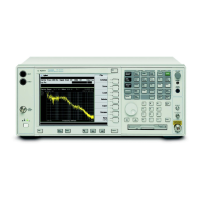Reconstructing Complex Conjugate Pole-Pairs
For pole-residue tables, the sign of the imaginary part of a complex residue is
now significant because of the assumptions the analyzer makes about the
conjugated pole pair. Unlike complex pole terms, the imaginary part of a
complex residue can have a sign.
The formula for a complex residue over a complex pole is:
where:
(real part) is the real number and its sign
(imaginary part) is the imaginary number and
its sign; for poles, consider it positive
Associating the sign of the imaginary part of a complex residue with the First
Conjugate Term establishes the sign convention for the imaginary part of the
complex conjugate pole-pair. The second conjugate term is formed by
conjugating the residue and pole in the First Conjugate Term.
In the case of a simple (real) residue over a complex conjugate pole-pair, the
formula used is:
where:
(residue) is the real residue in the table and its sign
(real part) is the real number and its sign
(imaginary part) is the imaginary number and
its sign; for poles, consider it positive
In this case, the residue has no imaginary part. Thus, there is no sign
association between the residue and the complex conjugate pole-pair. If you
are synthesizing displacement or acceleration in a spring-mass-damper system,
residues are imaginary, that is the real part is zero. If you are synthesizing
velocity, the residue is real.
(Residue, real part) Residue,imaginary part)
s - (Pole, real part) - j(Pole,imaginary part)
first conjugate term)
+ j(
(
+
−
(Residue, real part) - (Residue, imaginary part)
Pole, real part) + j(Pole, imaginary part)s(
+
(Residue)
s - (Pole, real part) + j(Pole, imaginary part)
(Residue)
s - (Pole, real part) - j(Pole, imaginary part)
Agilent 35670A
Synthesis Option 1D3 Operator's Guide
15-8
